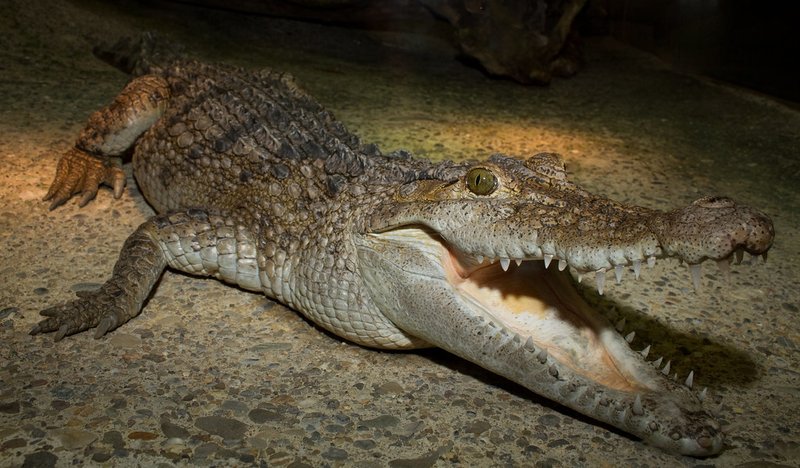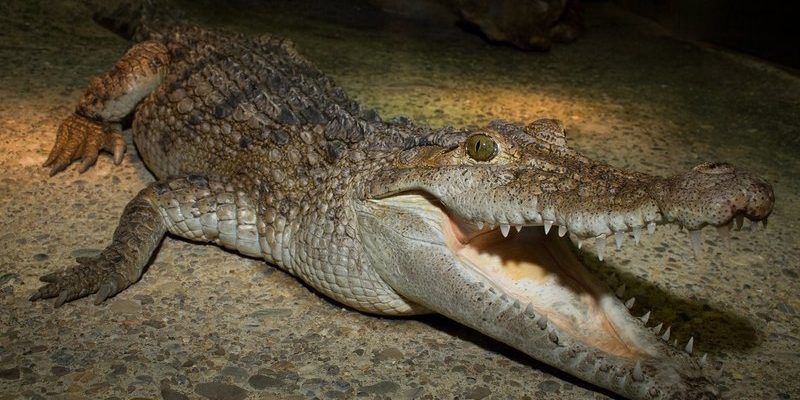
Let’s dive into the world of crocodiles, their conservation status, and the efforts being made to protect them. This isn’t just a story about the past; it’s about the present and future of these incredible reptiles. So, grab a cup of coffee, and let’s chat!
Understanding Crocodile Species and Their Habitats
Crocodiles belong to a group of reptiles known as *crocodylians*, which also includes alligators, caimans, and gharials. There are about 15 different species of crocodiles, ranging from the large, fearsome saltwater crocodile to the smaller, more elusive dwarf crocodile. Each species has its own unique habitat preferences and behaviors, which play a significant role in their survival.
Their habitats vary widely, from freshwater lakes, rivers, and marshes to brackish coastal areas. Crocodiles are versatile and adaptable creatures, but many are also sensitive to environmental changes. Pollution, habitat loss, and climate change can drastically impact their living conditions. Imagine living in a neighborhood that’s slowly falling apart—that’s the kind of pressure crocodiles are under.
Each species has its own conservation status. For instance, the *Siamese crocodile* is critically endangered, while others, like the *American crocodile*, are more stable but still face threats. Understanding their habitats is crucial because it helps conservationists create effective strategies for protecting these amazing reptiles.
Reasons Behind Crocodile Endangerment
Crocodiles are facing numerous threats that contribute to their endangered status. Let’s break down some of the key reasons why these reptiles are at risk:
- Habitat Loss: Urban development, agriculture, and dam construction can destroy the natural habitats where crocodiles thrive. Picture a riverbank transformed into a shopping complex—this not only displaces crocodiles but also affects the entire ecosystem.
- Poaching: Crocodiles are hunted for their skin, which is highly valued in the fashion industry, and for their meat. This illegal trade can decimate local populations, especially when combined with unregulated hunting.
- Climate Change: Rising temperatures and changing rainfall patterns can severely impact the water levels in crocodile habitats. This not only affects their breeding grounds but also leads to increased competition for food and space.
- Pollution: Contaminated waters from agriculture or industrial runoff can harm crocodiles directly and indirectly by impacting their prey. Imagine trying to survive in a place where your food is becoming toxic.
These threats create a complex web of challenges that make crocodile survival increasingly difficult. Each issue compounds the others, leading to a rapid decline in populations.
Current Conservation Efforts
Conservationists and organizations worldwide are stepping up to address the challenges crocodiles face. Different species need different strategies, but here are some general efforts in place:
1. Protected Areas: Many regions have designated protected areas where crocodiles can live without the threat of habitat destruction. Think of these areas as safe havens where they can breed, hunt, and thrive. For example, the *Sundarbans* mangrove forest in India is crucial for the saltwater crocodile population.
2. Breeding Programs: Some species have become so endangered that breeding programs in captivity are necessary. This means breeding crocodiles in zoos or sanctuaries and reintroducing them into the wild. It’s a bit like ensuring that a rare plant can grow again after being nearly wiped out.
3. Legal Protections: Many countries have regulations in place to protect crocodiles. For instance, the trade of certain species is banned or strictly controlled. These laws help curb poaching and illegal hunting, but enforcement can be tricky.
4. Community Involvement: Engaging local communities in conservation efforts is vital. When communities understand the importance of crocodiles to the ecosystem and their economic value (like ecotourism), they’re more likely to protect them. Imagine a local school taking a field trip to observe crocodiles, sparking an interest in conservation instead of fear.
Successful Case Studies
There’s good news, too! Some conservation efforts have seen success and offer hope for crocodile populations.
One shining example is the recovery of the *American crocodile* in Florida. After being listed as endangered in the 1970s, concerted conservation efforts, including habitat restoration and public education, have helped boost their numbers. By creating protected nesting areas and raising awareness, populations have significantly increased.
Another success story is the *Orinoco crocodile*, once on the brink of extinction. Conservation programs that included captive breeding and release, alongside strict protections, have shown positive results. It’s all about teamwork—scientists, governments, and communities coming together for a common goal.
These stories show that change is possible, giving us hope for the future of crocodiles and encouraging continued efforts.
The Role of Education and Awareness
Education plays a huge part in crocodile conservation. When people understand the importance of these creatures in their ecosystems, they’re more likely to care about their survival. Here’s how education can make a difference:
– School Programs: Many organizations create educational materials and programs for schools, teaching children about the role of crocodiles in their environments. Imagine a classroom buzzing with excitement as kids learn about reptiles and the importance of biodiversity!
– Community Workshops: Workshops and seminars can help local communities understand the impact of their actions on crocodile populations. This could involve discussions on sustainable fishing practices or how to reduce pollution.
– Social Media Campaigns: In our digital age, social media can be a powerful tool. Campaigns highlighting crocodile conservation efforts can reach a broad audience, building support and raising funds for important initiatives.
The more people know, the more they can contribute to protecting these magnificent animals.
What Can You Do to Help?
You might be wondering how you can pitch in to support crocodile conservation. Here are a few simple ways to make a difference:
1. Support Conservation Organizations: Donating to reputable organizations that focus on crocodile conservation can have a significant impact. Your contributions can help fund vital research and restoration projects.
2. Spread the Word: Talk to your friends and family about crocodile conservation. The more people who understand the issues, the more support these projects will receive.
3. Responsible Tourism: If you ever find yourself in places where crocodiles live, consider eco-friendly tourism options. These activities often support conservation and provide local communities with sustainable income.
4. Advocate for Environmental Protection: Support laws and initiatives aimed at protecting natural habitats and wildlife. Your voice can influence positive change.
Here’s the thing: Every small action counts. You may not be able to save the world alone, but you can certainly help save the crocodiles.
Final Thoughts on Crocodile Conservation
Crocodiles are fascinating creatures that deserve our protection. As they face numerous threats, from habitat destruction to climate change, it’s crucial that we come together to support conservation efforts. The work being done by organizations and individuals around the world shows us that change is possible.
By raising awareness, supporting legal protections, and getting involved in conservation, we can help ensure that future generations get to enjoy these incredible reptiles. It’s a collective effort that requires dedication, but together, we can make a significant impact. So the next time you see a crocodile—or even just think about one—remember that every action counts. Let’s protect these magnificent animals for years to come!

